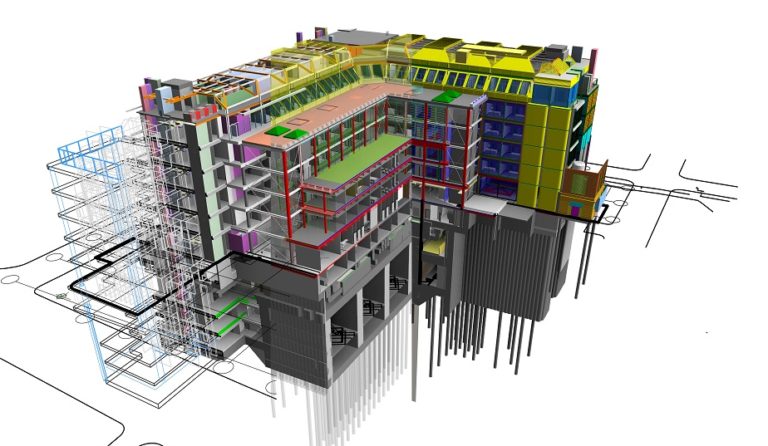The building industry is starting to see the benefits of BIM. Estimators, designers, project managers, and subcontractors are using BIM to streamline their processes. As BIM technology continues to evolve and more businesses adopt its use, construction companies will also unveil more benefits.
What is BIM
Building Information Modeling, or BIM, is a way of representing many parts of the construction process. BIM can represent the terrain, utilities and buildings. The BIM management process is the process of generating and managing digital representations. This includes the physical and functional characteristics of places. BIM isn’t just building a 3D computer model; it shows how certain buildings and materials should hold up over time. BIM incorporates multiple computer-aided designs and technical specifications to fully design a project. BIM uses 3D modeling, or CAD, which is the 3D modeling portion of a BIM model. Designers use these three-dimensional images to verify configuration and produce better buildings.
Bim is a 4D rendering tool because it can display time’s effects as well as the 3D model. Designs are easier to share than paper design plans. Users can also turn those 3D models into 2D drawings for clarification or those who like having both. Bim works to increase collaboration between designers, subcontractors, and more in the early phases of construction. Since users can collaborate early with BIM, they can also reduce the amount of rework that a project could need.
Benefits of BIM in the Construction Industry
BIM solutions in the construction industry have garnered a number of general benefits. A few case studies have demonstrated that these solutions can reduce rework. Designers can use CAD to design and BIM to spot clashes. Because they build ductwork and other components into the layout, they can see if everything will fit. Furthermore, by reducing changes and conflict, these solutions improve communication between designers and contractors and thus result in a better product for everyone.
For Architects and Designers
The benefits of building information modeling for designers and architects are numerous, but two stand out above the rest: a reduction in construction conflicts, and a reduction in design rework. Architects can more easily ensure that designs are constructible, which helps them look better to their clients—if your design was created in a 3D environment, it will be easier to build, which means fewer hiccups along the way. However, BIM is not just about making the project look good; it’s also about ensuring the integrity of the architect’s and designer’s work. Because BIM allows architects to track changes through every phase of the design process, they can enforce the design as is; because they’re able to ensure an identical product during construction, owners end up with exactly what they were expecting. …
For Estimators
A BIM (building information modeling) model is a database of information. A building information model can be used to store individual costs associated with each element in the building. In this way, every single piece in the model has an associated cost that can be totaled up with building information modeling software easily. This makes an estimators job easier. In no way is building information modeling (BIM) a replacement for an estimator. Estimators have years of experience and training that are invaluable to the company and projects. However, estimators can see the benefits of BIM in the database of knowledge. Estimators can use the model as a second step verification. If their numbers and the models numbers are way off, then they can ask the designers to go through the model with them. That way both parties can use their knowledge to ensure an accurate estimate and plan.
For Project Managers
The use of building information modeling (BIM) technology by project managers is having a positive impact on the construction industry. Dodge Data & Analytics reports that project managers that use BIM have seen dramatic improvements. Project managers that use BIM saw a decrease in the final project cost and a reduction in their project schedule. And that was from a report from 3 years ago. In the three years since BIM technology has gotten better. And with more companies utilizing BIM , project managers can see the highest return on investment with BIM technology.
For Subcontractors
The benefits of BIM for subcontractors are two-fold: not only do subcontractors see the same benefits that project managers do, but they also see additional benefits. Subcontractors can keep on top of change orders thanks to the BIM software—a helpful tool for tracking changes and alerting teams when changes are needed. Subcontractors can easily attach BIM files with a change order to show why it’s needed, and can overlay different versions of the plan in order to stay updated on what is going on with the project.

